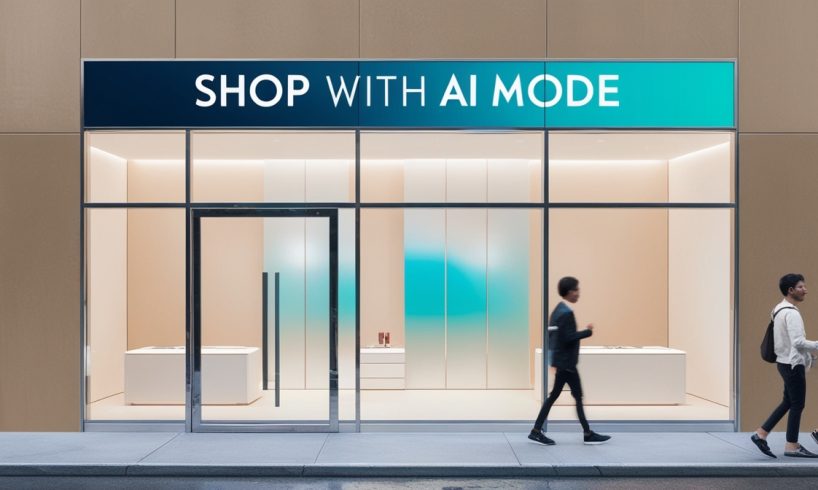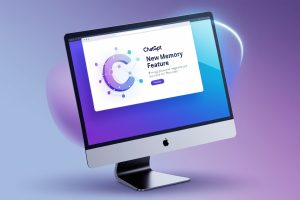
The future of online shopping is no longer limited to scrolling, adding to cart, and hoping for the best. With the introduction of AI Mode in fashion retail, shoppers can now virtually try on clothes and accessories from the comfort of their homes. This revolutionary blend of artificial intelligence and augmented reality (AR) is changing how we browse, buy, and experience fashion online.
Whether you’re shopping for a new outfit, curious about how a jacket fits, or unsure if a color complements your skin tone, AI Mode brings the dressing room to your screen literally.
What is AI Mode?
AI Mode refers to the use of artificial intelligence algorithms, computer vision, and AR to create a personalized, interactive online shopping experience. By using your smartphone camera or uploading a photo, AI Mode generates a realistic 3D rendering of how clothes would look and fit on your body.
Some platforms even let you input body measurements or use full-body scans to make the try-on experience incredibly accurate. From t-shirts to dresses, sneakers to sunglasses, AI Mode enables you to see the look, fit, and feel of an item before making a purchase.
How It Works
Here’s a typical AI-powered virtual shopping flow:
- Upload or Scan Yourself
Users upload a selfie, full-body photo, or take a quick scan via the retailer’s app. AI analyzes the shape, posture, and measurements to create a digital avatar or overlay. - Select Items to Try On
Choose from the store’s catalog—everything from clothes and shoes to hats and eyewear. - See It On You
The AI renders a real-time image or video of the selected item fitted to your body, adapting to your pose, lighting, and proportions. - Customize and Compare
Switch colors, sizes, or styles. See how different options look side-by-side. - Buy With Confidence
Once satisfied, complete the purchase knowing exactly how it will look and fit.
Benefits of AI Mode for Shoppers
- Reduced Guesswork: No more relying solely on size charts or user reviews.
- Improved Confidence: See how items look on your own body rather than a model’s.
- Fewer Returns: Try-before-you-buy reduces the likelihood of poor fit or style mismatches.
- Inclusive Shopping: AI Mode can adjust for all body types, genders, and sizes making fashion more accessible.
Benefits for Retailers
- Higher Conversion Rates: Virtual try-ons increase buyer confidence, leading to more completed purchases.
- Lower Return Rates: Accurate previews mean fewer disappointments and fewer returns.
- Data-Driven Personalization: Retailers can analyze try-on behavior to recommend better products.
- Enhanced Customer Engagement: Shoppers spend more time interacting with products, which boosts brand loyalty.
Use Cases: Who’s Leading the Way?
Several fashion brands and platforms have already adopted AI Mode technology:
- Zara and H&M are experimenting with in-app AR fitting rooms.
- Nike uses AI scanning for perfect shoe fits.
- Amazon Fashion is testing body scanning for personalized sizing.
- Snapchat and Instagram offer AR lenses for virtual fashion try-ons in partnership with major brands.
Even startups like Zeekit (acquired by Walmart) and MemoMi are providing white-label virtual try-on solutions to retailers.
The Tech Behind AI Mode
AI Mode leverages several cutting-edge technologies:
- Computer Vision: To detect and analyze body posture, shape, and dimensions.
- Augmented Reality (AR): To overlay clothing on live video or images.
- Machine Learning: To improve fit accuracy and suggest better styles over time.
- 3D Rendering: To simulate textures, fabrics, folds, and shadows in realistic ways.
These technologies work together to deliver a seamless, immersive fashion try-on experience that was previously only possible in physical stores.
AI Mode vs Traditional Shopping: A Comparison
| Feature | Traditional Online Shopping | AI Mode Shopping |
|---|---|---|
| Product fit | Guesswork | Personalized, visual try-on |
| Experience | Static images | Interactive, real-time previews |
| Returns | High | Lower |
| Confidence | Medium | High |
| Engagement | Low | High |
Challenges and Considerations
While AI Mode is promising, there are still a few hurdles:
- Accuracy Gaps: In some cases, digital clothing may not perfectly reflect fabric movement or drape.
- Privacy Concerns: Users must trust retailers with personal images or scans.
- Device Compatibility: AR features require modern phones with camera access and decent processing power.
- Cost for Retailers: Implementing AI Mode requires investment in 3D models and backend integration.
Despite these challenges, the technology is improving rapidly and becoming more accessible even for mid-size retailers.
The Future of AI in Fashion
AI Mode is just the beginning. Future innovations may include:
- Style Recommendations Based on Mood or Weather
- AI Stylists who curate entire outfits based on your history
- Voice-Activated Shopping Assistants
- Virtual Social Try-Ons where friends can see your looks in real-time and give feedback
Combined with RCS messaging, chatbots, and WhatsApp Business integrations, AI will reshape not only how we shop but how we discover, choose, and wear fashion.
Shop with AI Mode isn’t a gimmick it’s the future of e-commerce. By combining AI, AR, and personalization, this technology solves one of online shopping’s biggest pain points: not knowing how something will look or fit. Whether you’re a fashion brand, a tech-forward startup, or a curious shopper, the rise of AI Mode presents a new era where buying clothes online is not only easier but smarter.

I am a person who is positive about every aspect of life.I have always been an achiever be it academics or professional life. I believe in success through hard work & dedication.
Technology Blogger at TechnoSecrets.com






